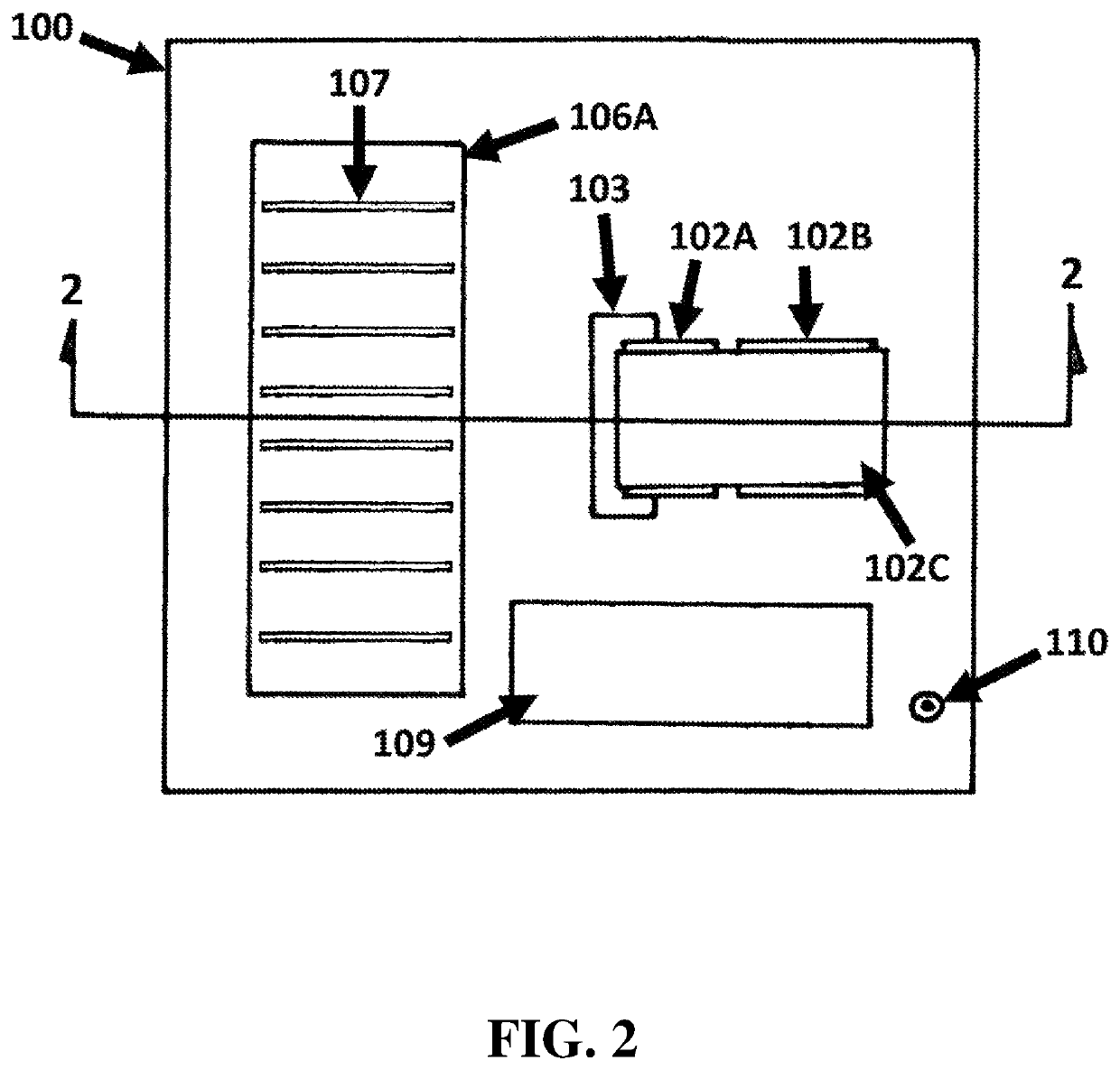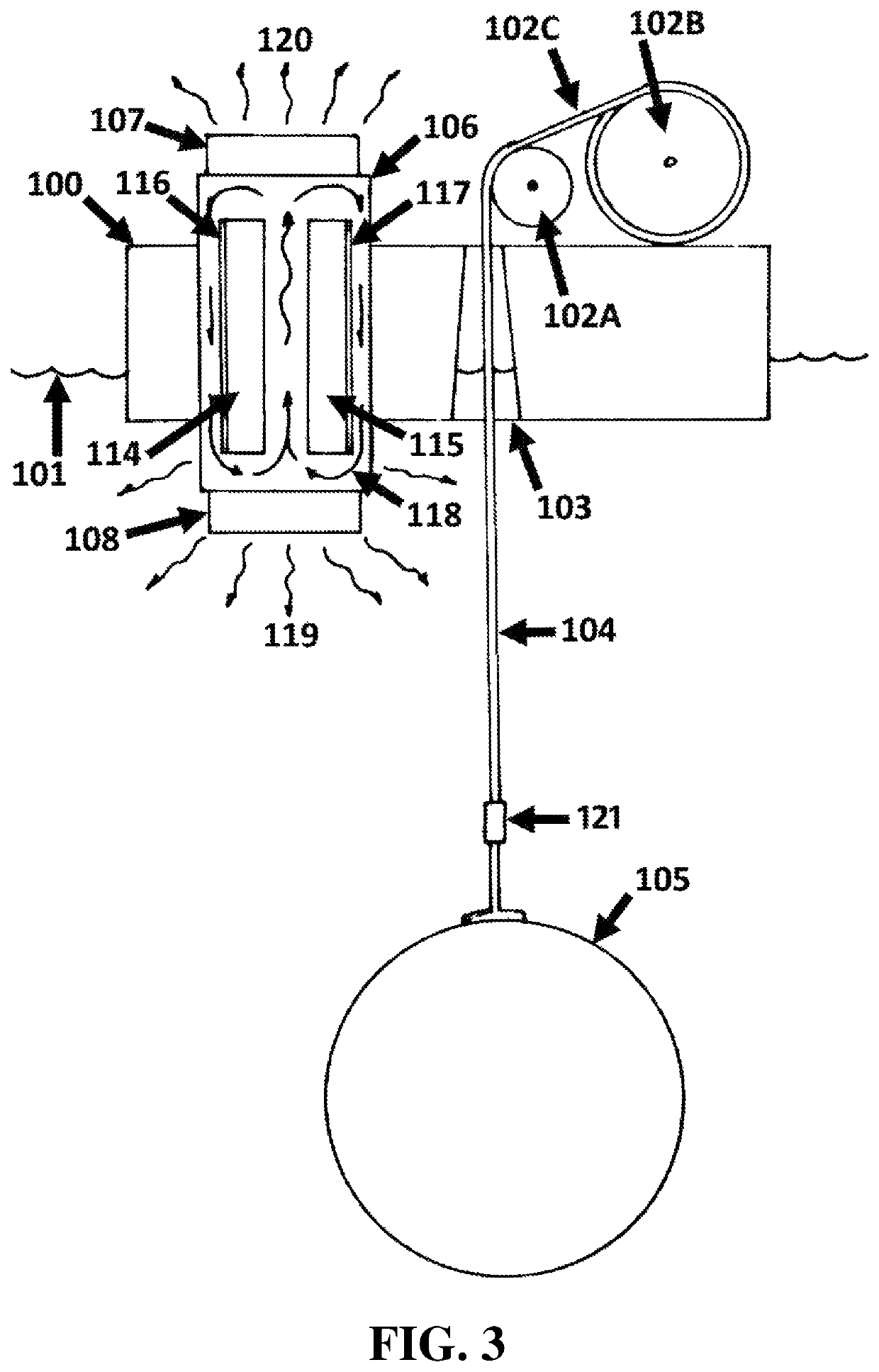Self-powered computing buoy
a self-powered, computing buoy technology, applied in special-purpose vessels, vessel construction, instruments, etc., can solve the problems of large-scale computing, computer heat generation, electrical power in order to operate, etc., to achieve low maintenance, reduce power consumption, and reduce the effect of deploymen
- Summary
- Abstract
- Description
- Claims
- Application Information
AI Technical Summary
Benefits of technology
Problems solved by technology
Method used
Image
Examples
embodiment 100
[0192]The illustrated embodiment 100 receives tasks, programs, data, messages, signals, information, and / or digital values, emitted 112, issued, and / or transmitted, from at least one satellite 111, at least in part, through antenna 110, the data transmitted by the satellite 111 having, at least in part, originated from a remote computer and / or server.
[0193]The illustrated embodiment 100 transmits 113, communicates, emits, and / or issues, data, task results, messages, signals, information, status updates, and / or digital values, at least in part, from antenna 110, which are subsequently received, at least in part, by satellite 111, which may then transmit that received data to a remote computer and / or server.
[0194]FIG. 2 shows a top-down view of the embodiment of FIG. 1. A buoy 100 floats adjacent to the surface of a body of water. Attached to, mounted on, and / or incorporated within, the buoy 100 is a power take-off (PTO) 102, and / or electrical power-generation assembly. The PTO includ...
embodiment 130
[0205]The embodiment 130 incorporates a rigid sail 140 that is able to impart thrust to the device when driven by wind. The amount of thrust being adjustable and / or able to be optimized through the rotation of the sail to an optimal angle with respect to the wind direction. An antenna 144 mounted on, and / or affixed to, the top of the rigid sail 140 allows the device to send and receive electronic, and / or electromagnetic, transmissions (e.g. radio).
[0206]FIG. 6 shows a side view of the embodiment of FIG. 4. A buoy 130 floats adjacent to the surface 131 of a body of water. Attached to, mounted on, and / or incorporated within, the buoy 130 is a plurality of power take-offs (PTOs), e.g. 132, and / or electrical power-generation assemblies. PTO-specific cables, e.g. 133, chains, ropes, linkages, and / or flexible connectors, connect each respective PTO to the approximate center of a submerged inertial mass 134. The cables pass through a hole 135 and / or aperture in a top surface of the inertia...
embodiment 375
[0288]FIG. 22 illustrates the processes and / or events that are characteristic of some embodiments of the present invention. A satellite 370 transmits 371 a data packet to a transceiver 372, and / or data communication system, on an embodiment of the present invention. The embodiment 373 receives, validates, and possibly decrypts, the “task data” encoded within the data packet. If the task data 374 specifies a new program and / or task, and any related data, then 374 the embodiment 375 adds the new task and its related data (if any) to its task queue 376.
[0289]When 377 there is an available CPU, computer, and / or sufficient available computing resources, then 378 a pending task is identified and / or selected, and its execution is started on the available CPU 380. A “timeout” value 379 is associated with the selected pending task in the task queue 376. This timeout value represents a future time after which it will be reasonable for the embodiment to assume that the task's execution has fai...
PUM
 Login to View More
Login to View More Abstract
Description
Claims
Application Information
 Login to View More
Login to View More - R&D
- Intellectual Property
- Life Sciences
- Materials
- Tech Scout
- Unparalleled Data Quality
- Higher Quality Content
- 60% Fewer Hallucinations
Browse by: Latest US Patents, China's latest patents, Technical Efficacy Thesaurus, Application Domain, Technology Topic, Popular Technical Reports.
© 2025 PatSnap. All rights reserved.Legal|Privacy policy|Modern Slavery Act Transparency Statement|Sitemap|About US| Contact US: help@patsnap.com



